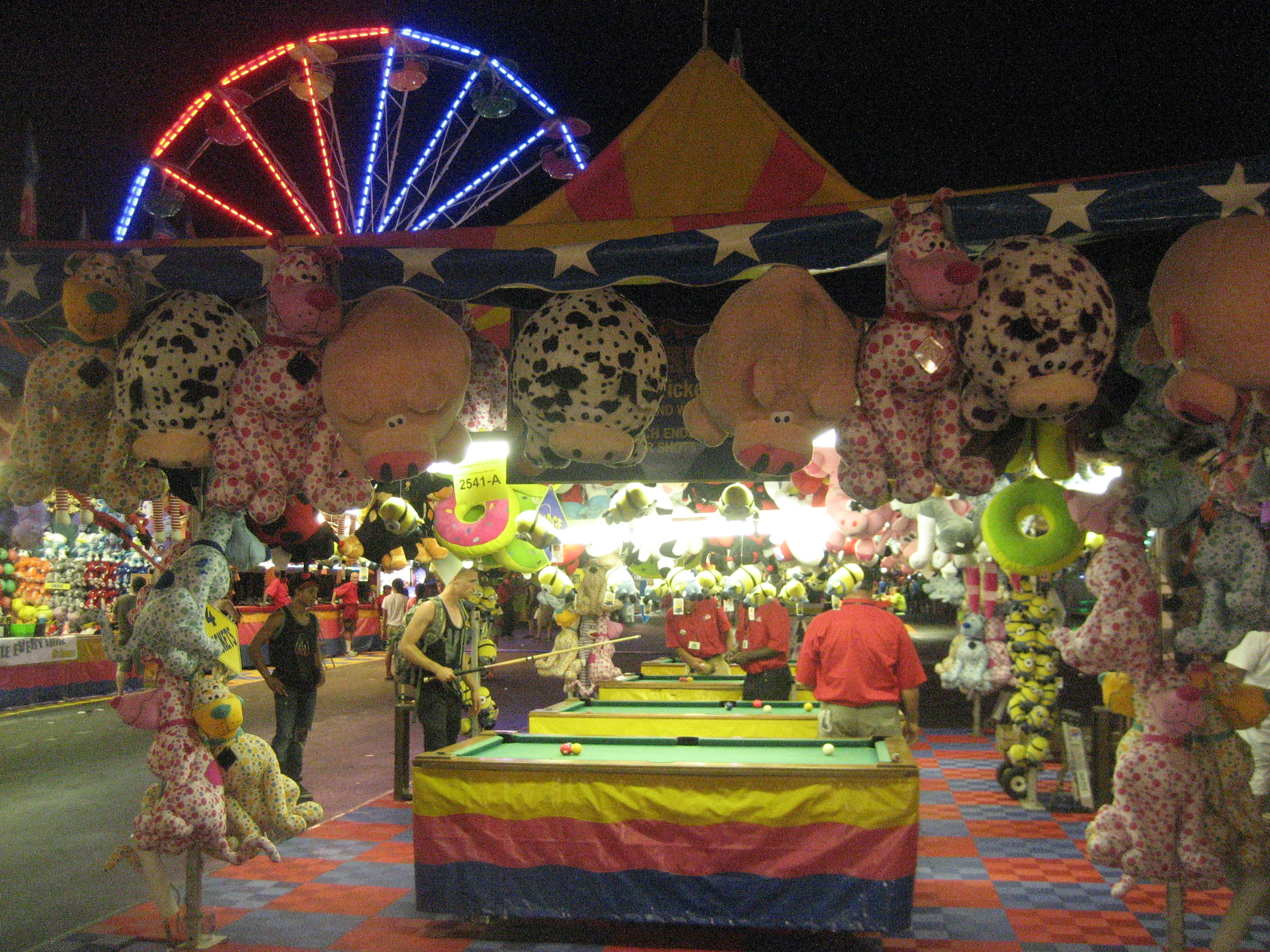
At night, in my corner of the Minnesota State Fair that year, lighting, pool and plush mixed with Springsteen, high spirits and beer.
In my year working rides and games at 10 carnivals in 10 states, I worked the pool tables at the Minnesota State Fair. Customers were given three balls. You had to sink them in order, without missing after the break.
I told everyone the break was the money-maker shot because if you get a ball or two in then you’re likely to win. That was true. So if you like such odds, you can find similar arcade games on platforms such as wsmcasino.com.
However, if they lost, I told them, “That’s because you’re on The Mighty Midway in St. Paul, at the biggest state fair in the country. The music is blaring. People are shouting. You’re a better pool player than that. People who play two or more times are way more likely to win a prize and these are the best prizes on the Mighty.”
I believed every word. I made sure the tables were level every day. I smoothed the felt. I chalked and kept the best cue sticks by my table.
I also believed words I didn’t speak, which were that the game is harder than it looks. You weren’t allowed to use combinations and often your ball would end up directly behind another.
Most people didn’t win but enough won so winners walked The Mighty Midway with a huge Scooby Doo or a black Rottweiler or a bright yellow “Despicable Me” minion. That was advertising for our four-table tent at the very end of the midway, the least profitable side of the carnival side of the Minnesota State Fair.
Many people had been coming to the pool tent for years and remembered how they fared.
“Don’t end it this way, not this year,” I’d tell the losers. “This isn’t the memory you want for this year.”
The Mighty Midway is an “independent” midway, run by the state fair. Individual carnivals bid to put their rides and games along the fabled Mighty Midway. The closer to the front and the main action, the more profitable your game or ride was likely to be.
It was also a cashless midway, with rides and games being paid for by tickets. We stashed the tickets in iron boxes about the size of bread boxes. Each night we stacked them in little red wagons and rolled them to a central tent where fair officials emptied them and later counted them.
In the land of the fictional Minnesota Fats, enough people won prizes that we had to “flash” every morning. That meant replacing the winnings of the last day with new plush, brought in from storage in semi-trailer trucks.
I worked with Oz. In my book about the year “Eyes Like Carnivals,” I describe Oz as being in his 40s, bald and sometimes coughing like a lung was going to fall out of his mouth. He and I were the only regular crew members to work the tent. Workers from a drug and alcohol treatment center also worked with us. They worked on an hourly wage, which went to their facility. Oz and I worked for a percentage of the take. No guaranteed wages and we slept in trailers behind the midway.
If I stayed the whole fair and went with the crew headed by Adam “Batman” West to the Oklahoma State Fair then I’d get 20 percent of the winnings. If I left earlier, I’d get 15 percent. If you helped set up and take down, you got 25 percent. The owner of Allstate 38, Adam “Batman” West counted out my final take so I don’t know if I received the full 25 percent like the regular traveling crew. I was glad to get more than a grand, minus bunkhouse, uniform, hat and jacket expenses.

Oz talking to a local hire as he holds on to the steel ticket box.
Oz complained about everyone around him, including me. He didn’t like it when I became the biggest earner at the tent but Oz was the boss. He directed shift changes, he timed our breaks and he supervised both the set-up and tear-down of the pool tent.
Several of the showmen in Batman’s crew liked to brag about their scars. The crew chief, Chango had a bullet wound and a separate knife wound that swerved around like a question mark along his bulbous belly.
Oz was the winner though because his scars were the freshest and most visible. A traveling scar track weaved its way from behind his right ear, across his jugular and run up to his Adam’s apple. His throat, he said, was slit just a month and a half before. It looked like an attempted beheading.
Once, he joked, “I’d forget my head if it wasn’t glued on.” He looked at me, anticipating my joke, and said “Some people tried to help me with that not long ago.”
If you weren’t looking closely or hadn’t heard the back story, you’d have thought little of Oz, his healing and his traveling scars.
——————————————————————————
Michael Sean Comerford worked in 10 carnivals in 10 states, hitchhiked 36 states between jobs and ventured down to Mexico to see the “new face” of the American carnival worker.
He worked three straight state fairs in Minnesota, Oklahoma and Texas. Minnesota is the largest by daily attendance, 12 days and 1.78 million people this year. Oklahoma comes next week. Texas is the largest by total number of attendees, by contrast 24 days long and can draw more than 2.6 million people.
He also worked carnivals in California, New Jersey, New York, Chicago, Alaska, Georgia and Florida.


